This post may contain affiliate links and we may earn a small commission when you click on the links at no additional cost to you. As an Amazon Affiliate, we earn from qualifying purchases. You can read our full disclaimer here.
If you’re interested in aquaponics, you’re probably aware of its benefits. Aquaponics systems allow you to grow plants and raise fish simultaneously, making them an efficient and sustainable method of food production. However, setting up and maintaining the proper aquaponics system filters is essential to ensure your system stays healthy and thriving.
This article will help you set up and maintain aquaponics filters for longevity. We’ll cover everything from understanding aquaponics systems to selecting the right fish and plants and maximizing the longevity of your filters.
Key Takeaways:
- Aquaponics systems are a sustainable and efficient method of food production.
- The proper filtration system is essential to ensuring the longevity of your system.
- Consider other factors like pH, dissolved oxygen, and water temperature for optimal water quality.
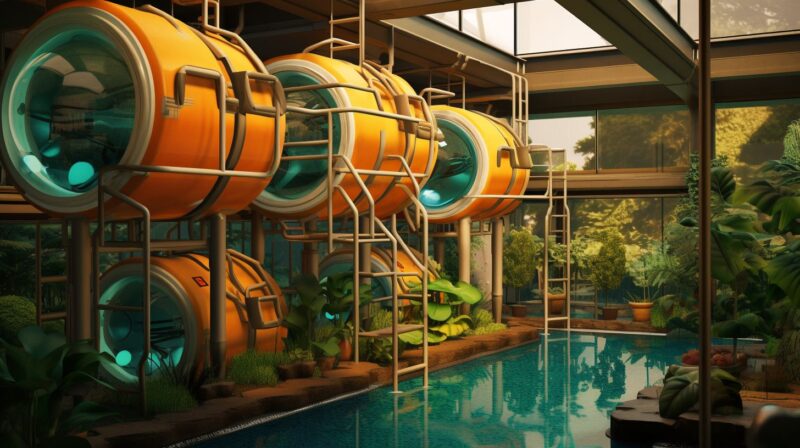
Understanding Aquaponics Systems
If you want to create a beautiful and functional garden, an aquaponic system might be just what you need. Aquaponics is a unique way of growing plants and fish in a closed system that recirculates water and nutrients between them, creating a symbiotic relationship that benefits both. It is a combination of aquaculture and hydroponics.
In an aquaponic system, fish live in a tank, and bacteria break down their waste into nutrients that plants can use. The nutrient-rich water is then pumped to a grow bed where plants are grown in a soilless medium, which filters out the nutrients and cleans the water. The clean water is then cycled back into the fish tank, creating a self-sustaining ecosystem.
Aquaponics is an efficient method for growing food in small spaces. It is beneficial for urban or indoor gardening where space is limited.
The Components of an Aquaponics System
The basic components of an aquaponic system are:
- A fish tank
- A grow bed
- A water pump and tubing
- Aeration system
- Nutrient-rich water
The fish tank is where your fish live and produce waste, the source of plant nutrients. The water is moved between the fish tank and grow bed by a water pump and tubing. The grow bed is where your plants grow and filter the water. The aeration system ensures enough oxygen in the water for fish and plants to thrive.
With proper setup and maintenance, aquaponics systems yield sustainable fresh produce and fish with less water and fertilizer than traditional gardening methods.
Selecting the Right Type of Fish for Aquaponics
When selecting fish for your aquaponics system, you must consider the type of fish that will thrive in your environment. Some fish species are hardier than others and better suited for aquaponics.
Tilapia is popular among many aquaponics enthusiasts due to its hardiness and adaptability to different water temperatures. This fish species is known for its fast growth rate and ability to produce a large amount of waste, which is beneficial for plant growth.
Other fish species commonly used in aquaponics include catfish, trout, and koi. Each species has its preferred water temperature and specific water quality requirements, so do your research and select the fish that best suits your system.
When selecting fish for aquaponics, it’s also necessary to consider the potential for food production. Tilapia, for example, is known for its excellent taste and can be a great source of protein for your family.
Overall, selecting the right fish for your aquaponics system is crucial for its success. Take the time to research and choose the fish species that best suit your system, and consider the potential for food production.
Maintaining Water Quality in Your Aquaponic System
Maintaining water quality is one of the most critical aspects of an aquaponics system. The health and well-being of the fish and plants depend heavily on the quality of their living water.
| Aspect | Description |
|---|---|
| Understanding Water Quality | Affected by fish waste, uneaten food, and other organic matter. Compounds like ammonia, nitrate, nitrite, and algae are produced. Filtration removes these harmful substances. |
| Filtration Systems | Mechanical filters strain out waste. Biological filters use bacteria to convert harmful compounds. Chemical filters use substances like activated carbon. |
| Other Factors | Monitor pH levels (ideal: 6.8 to 7.2). Monitor dissolved oxygen (affects fish respiration and bacteria growth). Water temperature affects metabolic rates of fish and plants. |
Understanding Water Quality
Water quality in an aquaponics system is affected by various factors, including fish waste, uneaten food, and other organic matter. When these substances break down, they produce compounds such as ammonia, nitrate, nitrite, and algae that can harm fish and plants if they accumulate.
Proper filtration is essential to remove these harmful substances and maintain optimal water quality. Filtration systems should be able to remove solid waste and dissolved particles from the water while keeping the nitrate and ammonia levels in check.
Filtration Systems
Numerous filtration systems are available for aquaponics, including mechanical, biological, and chemical filters. Mechanical filters work by physically straining out solid waste. In contrast, biological filters use nitrifying bacteria to convert harmful compounds into less harmful ones. Chemical filters use substances such as activated carbon to remove impurities from the water.
Whichever filtration system you choose, size it properly and regularly check and clean it to maintain efficiency. A clogged filter can harm fish by causing water to back up in the tank.
Other Factors Affecting Water Quality
In addition to filtration, there are other factors you should monitor to ensure optimal water quality in your aquaponics system. These include pH levels, dissolved oxygen levels, and water temperature.
It is advised to regularly test the pH levels to maintain a healthy environment for fish and plants. Generally, a pH between 6.8 and 7.2 is ideal for most aquaponics systems. Dissolved oxygen levels should also be monitored, as they affect fish respiration and the growth of beneficial bacteria. Water temperature is another critical factor to consider, as it can impact the metabolic rate of both fish and plants.
Regular maintenance of your aquaponics system is crucial to prevent issues that could impact the health of the fish and plants. By monitoring and maintaining proper water quality, your system will thrive and provide fresh produce and healthy fish for years.
Setting Up Aquaponics System Filters
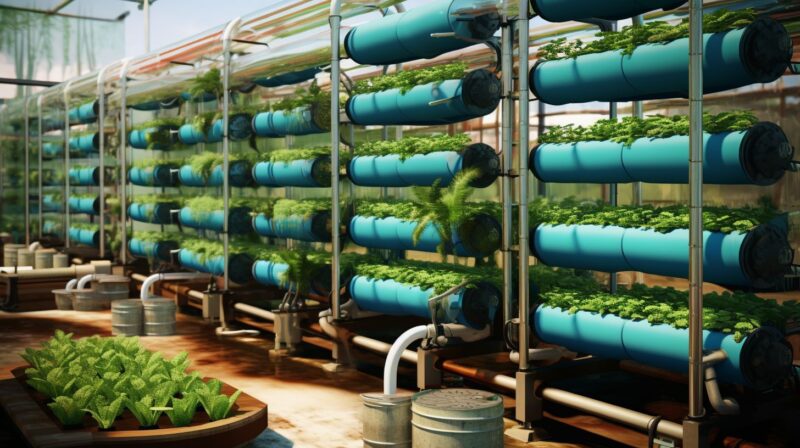
Once your aquaponics system is set up and running, ensure the water remains clean and healthy for your fish and plants. This is where aquaponics filters come in. You can use a few different types of filters, including grow media filters, grow beds, and sump tanks.
Grow Media Filters
A grow media filter is a bed of porous material that acts as a filter for the water in your system. The water flows through the filter, and the bacteria on the grow media break down the fish waste and other organic matter, converting it into nutrients for your plants. You can use many materials for growing media, including expanded clay pellets, lava rocks, and coconut coir.
Grow Beds
A grow bed is a type of grow media filter filled with various media and placed above the fish tank. The water is pumped up from the fish tank and flows through the grow bed, where the plants remove the nutrients, and the bacteria break down the waste. Some common media used in grow beds include gravel, pea gravel, or sand.
Sump Tanks
A sump tank works like a grow bed but is below the fish tank. The water is pumped up from the fish tank and then flows down into the sump tank, filtered before being pumped back to the fish tank. Sump tanks are often used in larger aquaponics systems, as they can handle higher volumes of water.
Water Flow and Filtration
You’ll need proper water flow and filtration regardless of your filter type. You want to ensure that the water is flowing evenly through the filter and that there are no clogs or blockages that could impact the health of your system. You may also want to consider adding additional filtration, such as mechanical or biological filters, to enhance your water quality further.
Overall, setting up and maintaining aquaponics filters can be some work. Still, it’s essential for the health and longevity of your system. By using suitable filter media, ensuring proper water flow, and monitoring the performance of your filters, you can help keep your aquaponics system running smoothly and your fish and plants healthy.
Proper Maintenance of Aquaponics Filters
Maintaining your aquaponics filters is crucial for the health of your fish and plants and ensuring your system’s longevity. Neglecting system maintenance can lead to clogs in your filters, which can force dirty water back into the fish tank and negatively impact the health of your fish.
Regularly clean and unclog your filters to prevent this from happening. Check your filters every week to see if they are working correctly, and remove any debris that may have accumulated.
In addition to cleaning your filters, monitor the health of your fish. Watch for signs of illness or stress, such as changes in behavior or appetite. If you notice anything concerning, take action immediately to prevent any issues from worsening.
By taking the time to maintain your aquaponics filters properly and regularly monitor the health of your fish, you can ensure the longevity of your system and the health of your fish and plants.
Maximizing Longevity of Aquaponics Filters
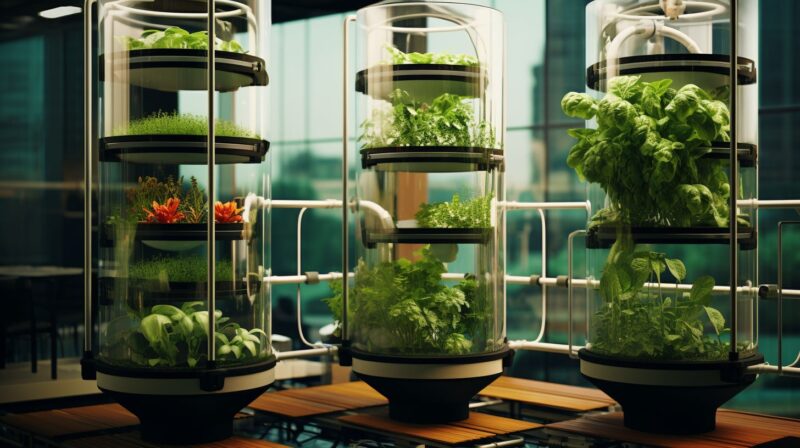
Suppose you want your aquaponics system to last a long time. In that case, ensuring your healthy and well-maintained growth system is paramount. By properly caring for your fish and plants and ensuring that your filtration system is working optimally, you can reduce the risk of problems and extend the life of your aquaponics filters.
Optimizing Fish and Plant Growth
Promoting healthy plant growth is one key strategy for enhancing your aquaponics filters’ longevity. This can help reduce the load on your filtration system, as the plants will be better equipped to absorb the nutrients your fish produces. You can also consider adding additional grow beds or increasing the surface area of your current beds to reduce this load further.
Another important consideration is to ensure that your fish are healthy and happy. Aeration is critical in promoting fish health and maximizing the performance of your aquaponics filters. Increasing the aeration in your system can help provide your fish with the oxygen they need to thrive. This can also help to reduce the buildup of waste in your system, which can impact the health of your fish and the overall performance of your aquaponics filters.
Proper Filtration Maintenance
Maintaining your filtration system is a prime aspect of maximizing the longevity of your aquaponics filters. This involves regularly cleaning and unclogging filters and inspecting for wear and damage. Having spare filtration media on hand can also be helpful if you need to replace any components.
In addition, ensuring proper water flow and circulation within your filtration system is vital to achieving optimal performance. This can be achieved by using suitable types of grow media and positioning your grow bed and sump tank in an optimal location. Good water flow can help to prevent clogs and maintain a healthy nutrient balance in your system.
Enhancing Longevity through Fish and Plant Selection
When it comes to maintaining the longevity of your aquaponics filters, selecting the right fish and plant species can make a significant difference.
Species of Fish
Choosing the suitable fish species is essential for ensuring optimal nutrient production in your system. Some of the most commonly used fish in aquaponics include tilapia, catfish, and trout. However, when selecting fish for your system, you must consider preferred water temperature and feeding habits.
For example, tilapia is popular due to its fast growth rate and hardiness. Tilapia also have a high tolerance for warm water, making them ideal for aquaponics systems in warmer climates. On the other hand, trout prefer cooler water temperatures and may not be suitable for all systems.
Food Production with Plants and Fish
Selecting the appropriate plant species for your aquaponic system can enhance the fish’s well-being and increase food production. Plants such as lettuce, kale, and herbs are excellent choices for aquaponics systems, as they can efficiently utilize the nutrients the fish produces.
In addition, some fish species are excellent for food production. For example, tilapia is popular for aquaponics and food production due to its fast growth rate and mild flavor. By selecting the right fish and plant species, you can maximize the benefits of your aquaponics system while maintaining the longevity of your filters.
Monitoring and Troubleshooting Aquaponics Filters
The fish tank is a crucial system component, and you should check the water temperature and aeration levels daily. Make sure also to test the pH levels and dissolved oxygen levels weekly to ensure they remain within the proper range for the health of your fish and plants.
If you notice any issues with water quality or aeration, troubleshoot and fix the problem as soon as possible. Poor water quality can cause toxic ammonia and nitrite buildup, harming fish. Follow the manufacturer’s instructions for your filtration system and maintain it regularly to prevent clogs or backups that could release harmful substances into the fish tank.
Remember, the benefits of aquaponics go beyond just the filtration system. Aquaponics can be a great way to grow fresh produce and raise healthy fish, making it sustainable and cost-effective to enhance your overall well-being. By monitoring and troubleshooting your aquaponics filters, you can ensure your system’s health and reap all its benefits.
Conclusion
Congratulations! You have now learned to set up and maintain aquaponics filters for longevity. Your aquaponics system can provide fresh produce and healthy fish for years with the right fish selection, proper maintenance, and regular monitoring. Remember, the key to a successful aquaponics system is balance.
Maintaining water quality, selecting suitable filters, and choosing the proper fish and plants are essential to creating a thriving ecosystem. Don’t forget to regularly check in on your system, monitoring water temperature, pH levels, and dissolved oxygen. If you encounter any problems, please refer to this article for helpful troubleshooting tips. Enjoy the benefits of your aquaponics system, from fresh food production to creating a sustainable and symbiotic environment for your fish and plants. Happy filtering!

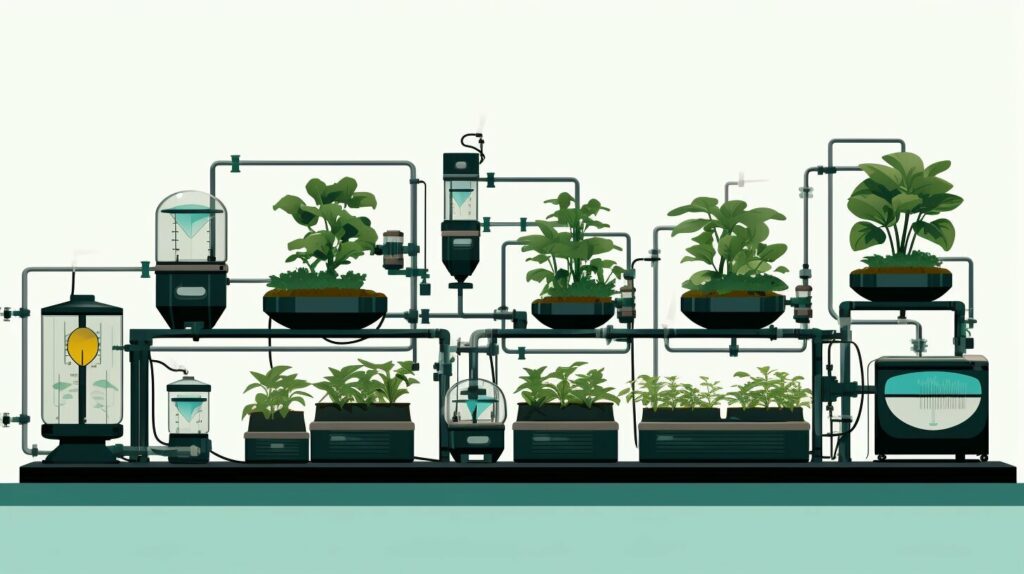

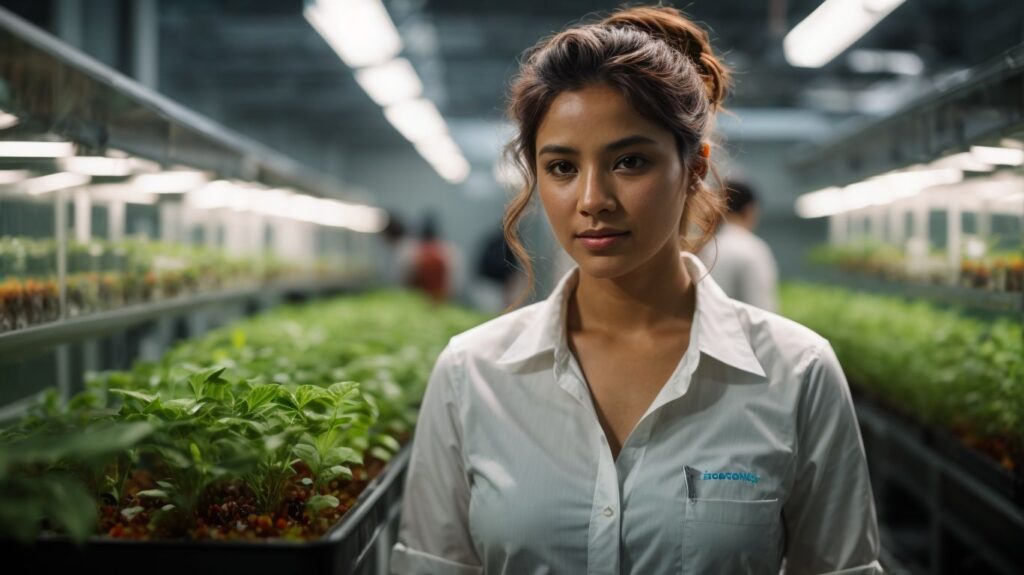
Pingback: Exploring the Latest Innovations Transforming the World of Aquaponics